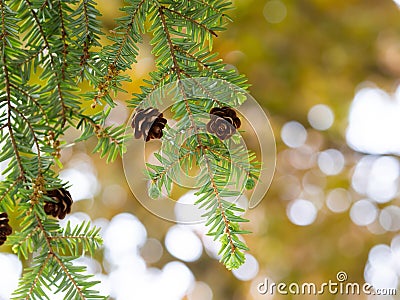Introduction to Hemlock Trees
Hemlock trees are a fascinating subject in the world of botany, known for their unique characteristics and ecological significance. These evergreen conifers belong to the genus Tsuga and are native to North America and parts of Asia. While many people admire their aesthetic appeal, it’s crucial to understand the potential dangers associated with hemlock trees.
In this article, we will explore what hemlock is, its various species, and the toxic properties that make it a plant to be cautious of. We’ll also delve into the historical context surrounding hemlock, including its infamous role in the death of Socrates. Additionally, we will discuss safety measures and what to do if you or someone else comes into contact with this potentially dangerous tree.
Understanding Hemlock Trees
Description and Characteristics
Hemlock trees typically grow between 40 to 100 feet tall, with slender trunks and drooping branches. Their needle-like leaves measure about ½ to 1 inch long and usually grow in flat sprays. The bark is thin, scaly, and grayish-brown in color. Small cones, about 1 to 2 inches long, add to the tree’s visual appeal.
Types of Hemlock Trees

There are two main types of hemlock trees:
- Eastern Hemlock (Tsuga canadensis): Found primarily in the eastern United States, this tree thrives in cool, moist environments. It’s often identified by its short, flat needles and small, cylindrical cones.
- Western Hemlock (Tsuga heterophylla): This species flourishes along the Pacific Coast. It features longer needles and larger cones, distinguishing it from its eastern counterpart.
Recognizing these types can help you stay informed about their specific characteristics and related risks.
Toxicity of Hemlock Trees
Chemical Compounds Present
Hemlock trees contain alkaloids, particularly coniine and gamma-coniceine. Coniine affects the central nervous system, leading to paralysis. Gamma-coniceine enhances the toxicity of coniine, increasing the overall risk. Even small amounts can cause severe health issues.
Mechanism of Toxicity
Hemlock toxicity occurs through ingestion, skin contact, and inhalation. Coniine disrupts neurotransmission, leading to muscle weakness and respiratory failure. Symptoms of poisoning vary but may include nausea, vomiting, trembling, and seizures. If exposure occurs, seek medical attention immediately.
Effects on Humans and Animals
Symptoms of Poisoning
Symptoms of hemlock poisoning vary depending on the severity of exposure. Common signs include:
- Nausea: You may experience stomach upset shortly after ingestion.
- Vomiting: This often follows nausea and can lead to dehydration.
- Trembling: Muscle twitching and shivering may occur as the toxins affect the nervous system.
- Seizures: In severe cases, seizures can happen due to central nervous system disruption.
- Respiratory Failure: High doses can lead to paralysis of breathing muscles, posing critical health risks.
Immediate medical attention is vital if you or someone else shows these symptoms after potential exposure.
Case Studies and Reports
Several case studies highlight the dangers of hemlock exposure. For example:
- Historical Reports: Ancient Greeks used hemlock as a method of execution, underscoring its potency.
- Modern Incidents: In recent years, pets have fallen ill after accidentally ingesting hemlock leaves or seeds, leading to hospitalization.
These cases illustrate the importance of being vigilant in areas where hemlock trees grow. Always monitor pets and children when outdoors to prevent accidental exposure.
Safety Precautions
Handling Hemlock Trees
- Avoid Contact: Never touch any part of a hemlock tree without protective gear. Use gloves, long sleeves, and pants when around these trees.
- Educate Yourself: Learn to identify Eastern and Western hemlock trees. Their needle-like leaves and drooping branches are clear indicators.
- Store Safely: Keep any tools or items used for yard work away from potential hemlock areas. This reduces the risk of accidental exposure.
- Monitor Surroundings: Watch for hemlock trees in parks, hiking trails, or your own yard. Remove leaves, seeds, or any parts that fall near play areas.
- Teach Children: Educate children about the dangers of hemlock trees. Ensure they stay away and don’t ingest any unknown plants.
Emergency Response Measures
- Seek Help Immediately: If exposed, call poison control or a healthcare provider right away. Early intervention often minimizes risks.
- Identify Symptoms: Be aware of the symptoms of hemlock poisoning, including nausea, trembling, and seizures.
- Monitor Anyone Who May Have Been Exposed: Keep an eye on individuals who may have come into contact with hemlock.
- Provide Information: When seeking help, provide details about the exposure. Include the amount ingested and the time of exposure.
- Don’t Induce Vomiting: Unless directed by a medical professional, do not induce vomiting. It might worsen the situation.
- Keep Records: Maintain a record of any contact with hemlock trees. Document symptoms and actions taken for medical professionals.
Conclusion
Staying informed about hemlock trees is key to ensuring your safety and that of your loved ones. Their toxic nature can pose serious risks if you’re not careful. By recognizing these trees and understanding their dangers, you can enjoy your outdoor spaces without worry.
Remember to teach your children and pets about the hazards associated with hemlocks. Keeping a watchful eye on your surroundings will go a long way in preventing accidental exposure. If you ever suspect contact or ingestion, seek medical help right away.
With a little knowledge and caution, you can protect yourself and your family from the hidden dangers of hemlock trees. Enjoy nature while staying safe!
Frequently Asked Questions
What are hemlock trees and where are they found?
Hemlock trees are coniferous trees known for their slender trunks, drooping branches, and needle-like leaves. The two main types are Eastern hemlock, prevalent in the eastern United States, and Western hemlock, found along the Pacific Coast. Recognizing these types is essential for understanding their potential risks.
Are hemlock trees toxic?
Yes, hemlock trees contain toxic compounds, primarily coniine and gamma-coniceine, that can pose significant risks to humans and animals. These compounds affect the central nervous system and can lead to severe symptoms if ingested or exposed to skin.
What are the symptoms of hemlock poisoning?
Symptoms of hemlock poisoning can include nausea, vomiting, trembling, seizures, and respiratory failure. Severity may vary, and immediate medical attention is essential if any of these symptoms occur after potential exposure.
How can I identify hemlock trees?
Hemlock trees have distinctive features such as a slender trunk, needle-like leaves, and drooping branches. Researching these characteristics will help in identifying them in your surroundings, crucial for avoiding accidental exposure.
What precautions should I take around hemlock trees?
To prevent exposure, avoid contact with hemlock trees, personally educate yourself and your family about their appearance, and monitor pets and children when outdoors. If exposure occurs, seek immediate medical help without inducing vomiting.
What should I do if I suspect hemlock poisoning?
If you suspect hemlock poisoning, immediately seek medical assistance. Provide healthcare professionals with information about the potential exposure and any symptoms you’ve observed for appropriate treatment. Do not induce vomiting unless instructed by a medical professional.











More Stories
What Is Yodo Para Tiroides and How Does It Affect Thyroid Health?
How to Claim Your Joy in League of Legends: A Step-by-Step Guide
What is WSET? A Comprehensive Guide to Wine Education